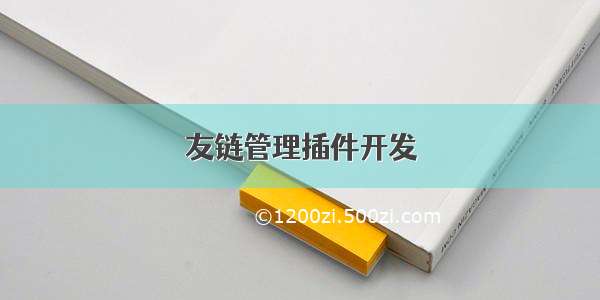
防采集标记:亢少军老师的课程和资料
以下说明了怎么调用平台特定的接口来取得并显示当前的电池电量。通过单独的一个的平台消息,使用 AndroidBatteryManager接口,和 iOSdevice.batteryLevel接口。
注意:这个示例完整可运行的代码在这儿/examples/platform_channel/,该版本使用 Java 开发 Android,Objective-C 开发的 iOS。iOS 的 Swift 版本请参阅/examples/platform_channel_swift/.
步骤 1: 创建新工程
开始创建新工程:
在终端运行:flutter create batterylevel
默认模板支持使用 Java 编写 Android,Objective-C 编写 iOS。想使用Kotlin 或者 Swift,使用-i与/或-a标记;
终端运行:flutter create -i swift -a kotlin batterylevel
步骤 2: 创建 Flutter 平台客户端
应用的State类持有当前应用的状态。我们需要扩展它来持有当前的电池状态。
首先,我们构造通道。我们使用MethodChannel编写单独的平台方法并返回电池变量。
通道的客户端和宿主端通过在构造器中传入通道名来连接。所有的通道名在一个应用中必须唯一;我们推荐使用唯一的’域名前缀’给通道名加前缀,如samples.flutter.io/battery。
import 'dart:async';import 'package:flutter/material.dart';import 'package:flutter/services.dart';...class _MyHomePageState extends State<MyHomePage> {static const platform = const MethodChannel('samples.flutter.io/battery');// Get battery level.}
接下来,我们调用方法通道上的方法,指定具体方法。通过字符串标识符getBatteryLevel调用。调用也许会失败 – 例如如果平台不支持平台接口(比如运行在模拟器上),所以我们用语句块来包装invokeMethod调用。我们拿到返回结果在setState里面用_batteryLevel更新用户界面状态。
// Get battery level.String _batteryLevel = 'Unknown battery level.';Future<Null> _getBatteryLevel() async {String batteryLevel;try {final int result = await platform.invokeMethod('getBatteryLevel');batteryLevel = 'Battery level at $result % .';} on PlatformException catch (e) {batteryLevel = "Failed to get battery level: '${e.message}'.";}setState(() {_batteryLevel = batteryLevel;});}
最后,我们把模板中的build方法替换为一个小的用户界面用字符串显示电池状态,还有一个按钮来刷新这个值。
@overrideWidget build(BuildContext context) {return new Material(child: new Center(child: new Column(mainAxisAlignment: MainAxisAlignment.spaceEvenly,children: [new RaisedButton(child: new Text('Get Battery Level'),onPressed: _getBatteryLevel,),new Text(_batteryLevel),],),),);}
步骤 3a: 用 Java 添加 Android 平台特定实现
注意: 以下步骤使用 Java。如果你更喜欢 Kotlin,跳到步骤3b。
在 Android Studio 中打开 Android 宿主端:
打开 Android Studio。
选择菜单项 ‘文件 > 打开…’。
导航到 Flutter 应用程序的目录,选择它里面的android文件夹。点击确定。
在工程视图下打开位于java文件夹的MainActivity.java文件。
下一步,创建MethodChannel并在onCreate方法中设置MethodCallHandler。确保使用了和 Flutter 客户端同样的通道名。
import io.flutter.app.FlutterActivity;import io.mon.MethodCall;import io.mon.MethodChannel;import io.mon.MethodChannel.MethodCallHandler;import io.mon.MethodChannel.Result;public class MainActivity extends FlutterActivity {private static final String CHANNEL = "samples.flutter.io/battery";@Overridepublic void onCreate(Bundle savedInstanceState) {super.onCreate(savedInstanceState);new MethodChannel(getFlutterView(), CHANNEL).setMethodCallHandler(new MethodCallHandler() {@Overridepublic void onMethodCall(MethodCall call, Result result) {// TODO}});}}
下一步,我们添加真正的 Android Java 代码,使用 Android 电池接口取到电池电量。这些代码和你编写原生的 Android 应用一样。
首先,在文件顶部添加必要的应用:
import android.content.ContextWrapper;import android.content.Intent;import android.content.IntentFilter;import android.os.BatteryManager;import android.os.Build.VERSION;import android.os.Build.VERSION_CODES;import android.os.Bundle;
在 activity 类中onCreate的方法下面紧接着添加一个新的方法:
private int getBatteryLevel() {int batteryLevel = -1;if (VERSION.SDK_INT >= VERSION_CODES.LOLLIPOP) {BatteryManager batteryManager = (BatteryManager) getSystemService(BATTERY_SERVICE);batteryLevel = batteryManager.getIntProperty(BatteryManager.BATTERY_PROPERTY_CAPACITY);} else {Intent intent = new ContextWrapper(getApplicationContext()).registerReceiver(null, new IntentFilter(Intent.ACTION_BATTERY_CHANGED));batteryLevel = (intent.getIntExtra(BatteryManager.EXTRA_LEVEL, -1) * 100) /intent.getIntExtra(BatteryManager.EXTRA_SCALE, -1);}return batteryLevel;}
最后,我们完成之前添加的onMethodCall方法。我们需要一个单一的平台方法,getBatteryLevel,我们在call参数中检测它。这个平台方法的实现调用了我们在之前步骤中写的 Android 代码,并在成功和错误的情况下都返回response参数。如果调用了一个未知的方法,我们会发出报告。替换:
public void onMethodCall(MethodCall call, Result result) {// TODO}
为:
@Overridepublic void onMethodCall(MethodCall call, Result result) {if (call.method.equals("getBatteryLevel")) {int batteryLevel = getBatteryLevel();if (batteryLevel != -1) {result.success(batteryLevel);} else {result.error("UNAVAILABLE", "Battery level not available.", null);}} else {result.notImplemented();}}
你现在应该能够在 Android 系统上运行应用程序了。如果使用了 Android 模拟器,你可以在点击工具栏中的...按钮,在扩展控制栏设置电池电量。
步骤 3b: 用 Kotlin 添加 Android 特定平台实现
注意:以下步骤和步骤 3a 类似,除了用 Kotlin 代替 Java。
本步骤假设你在步骤 1.中使用-a kotlin选项创建工程。
在 Android Studio 中打开 Android 宿主端:
打开 Android Studio。
选择菜单项 ‘文件 > 打开…’。
导航到 Flutter 应用程序的目录,选择它里面的android文件夹。点击确定。
在工程视图下打开位于kotlin文件夹下的MainActivity.kt文件。(注意:如果你正在使用 Android Studio 2.3 编辑,‘kotlin’ 文件夹将会显示名为 ’java’。)
下一步,创建MethodChannel并在onCreate方法中调用setMethodCallHandler。确保使用了和 Flutter 客户端同样的通道名。
import android.os.Bundleimport io.flutter.app.FlutterActivityimport io.mon.MethodChannelimport io.flutter.plugins.GeneratedPluginRegistrantclass MainActivity() : FlutterActivity() {private val CHANNEL = "samples.flutter.io/battery"override fun onCreate(savedInstanceState: Bundle?) {super.onCreate(savedInstanceState)GeneratedPluginRegistrant.registerWith(this)MethodChannel(flutterView, CHANNEL).setMethodCallHandler {call, result ->// TODO}}}
下一步,我们添加真正的 Android Kotlin 代码,使用 Android 电池接口取到电池电量。这些代码和你编写原生的 Android 应用一样。
首先,在文件顶部添加必要的引用:
import android.content.Contextimport android.content.ContextWrapperimport android.content.Intentimport android.content.IntentFilterimport android.os.BatteryManagerimport android.os.Build.VERSIONimport android.os.Build.VERSION_CODES
在MainActivity类中onCreate的方法下面紧接着添加一个新的方法:
private fun getBatteryLevel(): Int {val batteryLevel: Intif (VERSION.SDK_INT >= VERSION_CODES.LOLLIPOP) {val batteryManager = getSystemService(Context.BATTERY_SERVICE) as BatteryManagerbatteryLevel = batteryManager.getIntProperty(BatteryManager.BATTERY_PROPERTY_CAPACITY)} else {val intent = ContextWrapper(applicationContext).registerReceiver(null, IntentFilter(Intent.ACTION_BATTERY_CHANGED))batteryLevel = intent!!.getIntExtra(BatteryManager.EXTRA_LEVEL, -1) * 100 / intent.getIntExtra(BatteryManager.EXTRA_SCALE, -1)}return batteryLevel}
最后,我们完成之前添加的onMethodCall方法。我们需要一个单一的平台方法,getBatteryLevel,我们在call参数中检测它。这个平台方法的实现调用了我们在之前步骤中写的 Android 代码,并在成功和错误的情况下都返回response参数。如果调用了一个未知的方法,我们会发出报告。替换:
MethodChannel(flutterView, CHANNEL).setMethodCallHandler {call, result ->// TODO}
为:
MethodChannel(flutterView, CHANNEL).setMethodCallHandler {call, result ->if (call.method == "getBatteryLevel") {val batteryLevel = getBatteryLevel()if (batteryLevel != -1) {result.success(batteryLevel)} else {result.error("UNAVAILABLE", "Battery level not available.", null)}} else {result.notImplemented()}}
你现在应该能够在 Android 系统上运行应用程序了。如果使用了 Android 模拟器,你可以在点击工具栏中的...按钮,在扩展控制栏设置电池电量。
步骤 4a: 用 Objective-C 添加 iOS 平台特定实现
注意:以下步骤使用 Objective-C。如果你更喜欢 Swift,跳到步骤4b。
在 Xcode 中打开 Flutter 应用的 iOS 宿主端:
打开 Xcode
选择菜单项 ‘文件 > 打开…’
导航到 Flutter 应用程序的目录,选择它里面的ios文件夹。点击确定。
确保 Xcode 工程编译没有错误。
打开位于 Runner > Runner 工程目录下的文件AppDelegate.m。
下一步,创建 ‘FlutterMethodChannel’ 并在application didFinishLaunchingWithOptions:方法中添加一个处理器。确保使用了和 Flutter 客户端同样的通道名。
#import <Flutter/Flutter.h>@implementation AppDelegate- (BOOL)application:(UIApplication*)application didFinishLaunchingWithOptions:(NSDictionary*)launchOptions {FlutterViewController* controller = (FlutterViewController*)self.window.rootViewController;FlutterMethodChannel* batteryChannel = [FlutterMethodChannelmethodChannelWithName:@"samples.flutter.io/battery"binaryMessenger:controller];[batteryChannel setMethodCallHandler:^(FlutterMethodCall* call, FlutterResult result) {// TODO}];return [super application:application didFinishLaunchingWithOptions:launchOptions];}
下一步,我们添加真正的 iOS ObjectiveC 代码,使用 iOS 电池接口取到电池电量。这些代码和你编写原生的 iOS 应用一样。
在AppDelegate类中,@end之前接着添加一个新方法:
- (int)getBatteryLevel {UIDevice* device = UIDevice.currentDevice;device.batteryMonitoringEnabled = YES;if (device.batteryState == UIDeviceBatteryStateUnknown) {return -1;} else {return (int)(device.batteryLevel * 100);}}
最后,我们完成之前添加的setMethodCallHandler方法。我们需要一个单一的平台方法,getBatteryLevel,我们在call参数中检测它。这个平台方法的实现调用了我们在之前步骤中写的 iOS 代码,并在成功和错误的情况下都返回response参数。如果调用了一个未知的方法,我们会发出报告。
[batteryChannel setMethodCallHandler:^(FlutterMethodCall* call, FlutterResult result) {if ([@"getBatteryLevel" isEqualToString:call.method]) {int batteryLevel = [self getBatteryLevel];if (batteryLevel == -1) {result([FlutterError errorWithCode:@"UNAVAILABLE"message:@"Battery info unavailable"details:nil]);} else {result(@(batteryLevel));}} else {result(FlutterMethodNotImplemented);}}];
你现在应该能够在 iOS 系统上运行应用程序了。如果使用了 iOS 模拟器,注意它不支持电池相关接口,应用会显示 ‘无法获取电池信息’。
步骤 4b: 用 Swift 添加 iOS 平台特定实现
注意:以下步骤和步骤 3a 类似,除了用 Swift 代替 Objective-C。
本步骤假设你在步骤 1.中使用-i swift选项创建工程。
在 Xcode 中打开 Flutter 应用的 iOS 宿主端:
打开 Xcode
选择菜单项 ‘文件 > 打开…’
导航到 Flutter 应用程序的目录,选择它里面的ios文件夹。点击确定。
下一步,在使用 Objective-C 设置的标准模板中添加 Swift 支持:
在工程中展开 Runner > Runner。
在工程中打开位于 Runner > Runner 下的AppDelegate.swift。
下一步,重写application函数并创建一个FlutterMethodChannel绑定到通道samples.flutter.io/battery:
@UIApplicationMain@objc class AppDelegate: FlutterAppDelegate {override func application(_ application: UIApplication,didFinishLaunchingWithOptions launchOptions: [UIApplicationLaunchOptionsKey: Any]?) -> Bool {GeneratedPluginRegistrant.register(with: self);let controller : FlutterViewController = window?.rootViewController as! FlutterViewController;let batteryChannel = FlutterMethodChannel.init(name: "samples.flutter.io/battery",binaryMessenger: controller);batteryChannel.setMethodCallHandler({(call: FlutterMethodCall, result: FlutterResult) -> Void in// Handle battery messages.});return super.application(application, didFinishLaunchingWithOptions: launchOptions);}}
下一步, 我们添加真正的 iOS Swift 代码,使用 iOS 电池接口取到电池电量。这些代码和你编写原生的 iOS 应用一样。
在AppDelegate.swift底部添加下面的新方法:
private func receiveBatteryLevel(result: FlutterResult) {let device = UIDevice.current;device.isBatteryMonitoringEnabled = true;if (device.batteryState == UIDeviceBatteryState.unknown) {result(FlutterError.init(code: "UNAVAILABLE",message: "Battery info unavailable",details: nil));} else {result(Int(device.batteryLevel * 100));}}
最后,我们完成之前添加的setMethodCallHandler方法。我们需要一个单一的平台方法,getBatteryLevel,我们在call参数中检测它。这个平台方法的实现调用了我们在之前步骤中写的 iOS 代码,并在成功和错误的情况下都返回response参数。如果调用了一个未知的方法,我们会发出报告。
batteryChannel.setMethodCallHandler({(call: FlutterMethodCall, result: FlutterResult) -> Void inif ("getBatteryLevel" == call.method) {receiveBatteryLevel(result: result);} else {result(FlutterMethodNotImplemented);}});
你现在应该能够在 iOS 系统上运行应用程序了。如果使用了 iOS 模拟器,注意它不支持电池相关接口,应用会显示 ‘无法获取电池信息’。
Flutter技术入门与实战: /26485813.html
Flutter交流学习群:894109159
Flutter开源项目请关注: /kangshaojun
Flutter视频教程:/lecturer/2436




![php开发我的世界插件 [搬运插件] [服务端插件] [管理]PlotMe——地皮插件[1.2.5-1.10.2]...](https://1200zi.500zi.com/uploadfile/img/16/106/0f4050677bd7e090b6432e9b41a9f86d.jpg)









